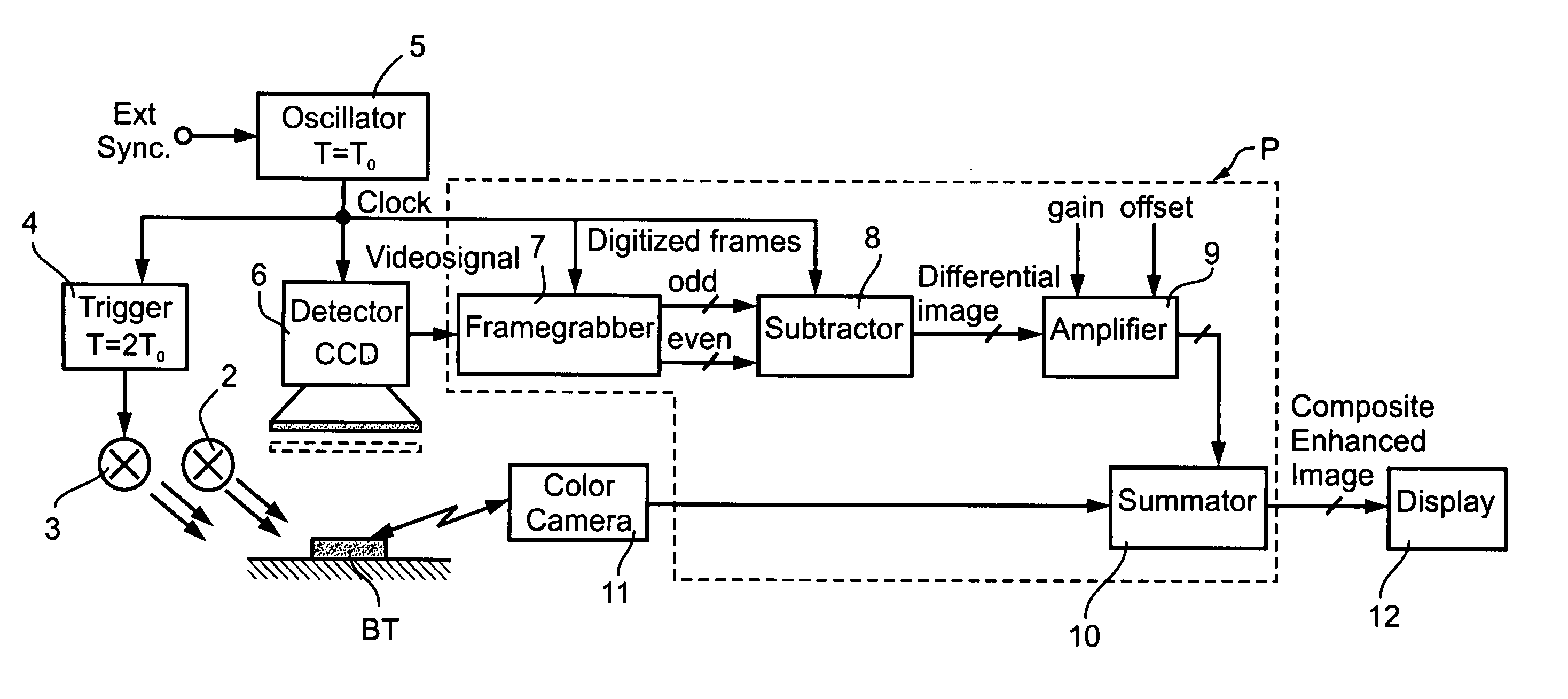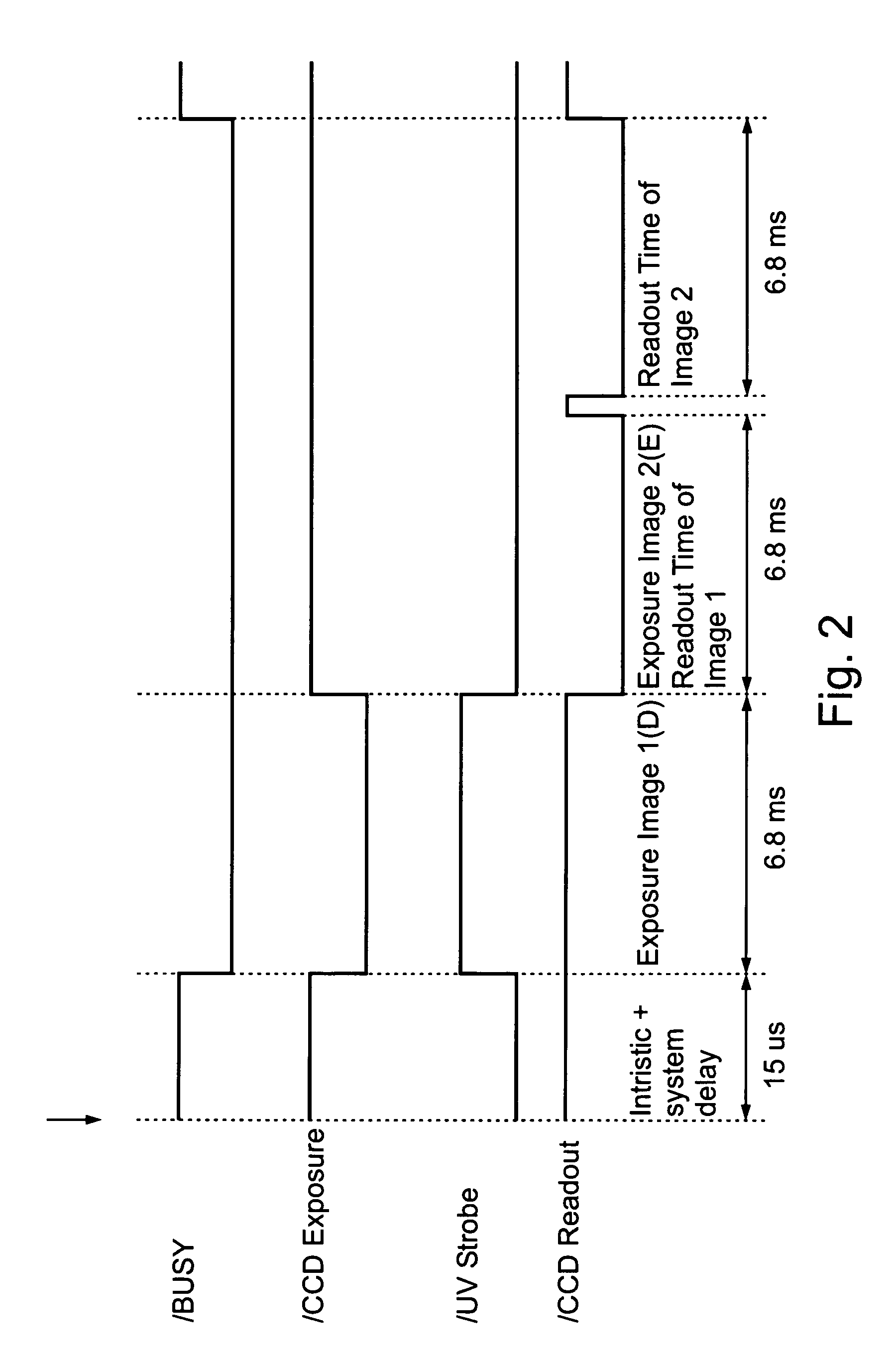Optical examination method and apparatus particularly useful for real-time discrimination of tumors from normal tissues during surgery
a tumor and optical examination technology, applied in the field of optical examination methods and apparatuses, can solve the problems of limited ability to localize tumor tissue by ultrasound once resection begins, inability to precisely visualize tumors, and complicated tumor removal procedures, so as to enhance the optical detection of target portions
- Summary
- Abstract
- Description
- Claims
- Application Information
AI Technical Summary
Benefits of technology
Problems solved by technology
Method used
Image
Examples
Embodiment Construction
[0040] As indicated earlier, the invention relates broadly to a method and apparatus for enhancing the optical detection of target portions of an object, and is particularly useful for enhancing the optical examination of biological tissue in order to distinguish cancerous tissue from non-cancerous tissue. The embodiments of the invention described below are therefore directed to the latter application, namely to enhance the optical examination of biological tissue in order to provide real-time tumor visualization during a surgical procedure, particularly a brain neurosurgical procedure, in order to better enable the surgeon to remove all the cancerous tissue with a minimum of non-cancerous tissue.
[0041] The apparatus illustrated in FIG. 1 is for use in examining biological tissue BT in a real-time manner while performing a surgical resection procedure. The biological tissue BT is continuously exposed to ambient (e.g., polychromatic or white) light, schematically indicated at 2. In...
PUM
 Login to View More
Login to View More Abstract
Description
Claims
Application Information
 Login to View More
Login to View More - R&D
- Intellectual Property
- Life Sciences
- Materials
- Tech Scout
- Unparalleled Data Quality
- Higher Quality Content
- 60% Fewer Hallucinations
Browse by: Latest US Patents, China's latest patents, Technical Efficacy Thesaurus, Application Domain, Technology Topic, Popular Technical Reports.
© 2025 PatSnap. All rights reserved.Legal|Privacy policy|Modern Slavery Act Transparency Statement|Sitemap|About US| Contact US: help@patsnap.com



